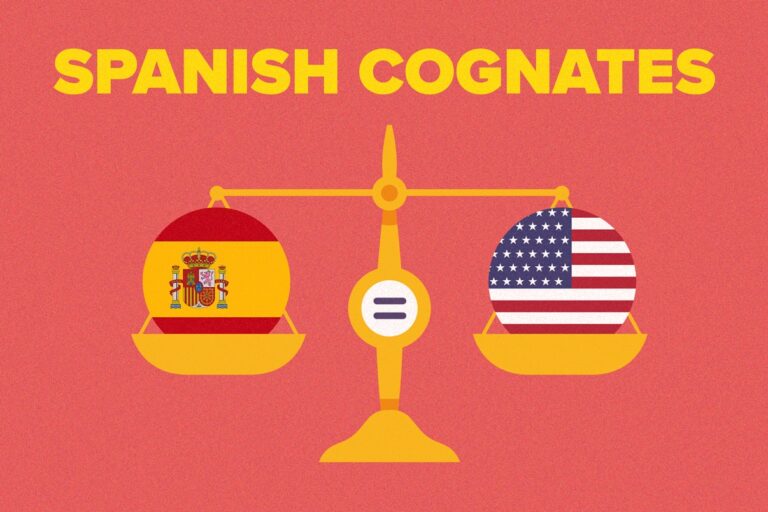How to Roll Your Rs in Spanish

For lots of Spanish learners, the language’s trickiest challenge can be boiled down into two simple little letters: rr. Though it may not feel like it, with the right kind of practice, anybody can learn to make the Spanish rolled rr sound.
This article contains some tried-and-true tips that’ll have you mastering those tricky rr sounds in no time at all.
Download: This blog post is available as a convenient and portable PDF that you can take anywhere. Click here to get a copy. (Download)
What is the Spanish Trilled RR Sound?
The letter r can make two different sounds in Spanish. Both of these sounds can be difficult for native English speakers who are learning Spanish, since neither sound exists in English.
The trilled r sound (also called a hard r or a rolled r, as previously mentioned) is the subject of this article. In fancy linguistics terms, it’s called an alveolar trill and it’s produced by a vibration of the tongue against the roof of the mouth.
In Spanish, you’ll find a trilled r sound in two situations:
1. The first and most common place you’ll encounter the sound is in the form of a double-r in the middle of a word. Here are some examples:
| Spanish | English Translation |
|---|---|
| Cerro | Hill |
| Arroz | Rice |
| Zorro | Fox |
| Torre | Tower |
| Perro | Dog |
| Terrible | Terrible |
| Carrera | Career, race (sports) |
| Garrapata | Tick (insect) |
| Aburrir | To bore |
| Corregir | To correct, to mark |
For more examples of this sound in the middle of a word, check out this website.
2. You’ll also find the rolled r sound in Spanish any time a word begins with the letter r. Again, here are some examples:
| Spanish | English Translation |
|---|---|
| Reto | Challenge |
| Rabia | Anger |
| Rosa | Rose, pink |
| Rojo | Red |
| Ratón | Mouse |
| Rayo | Lightning, a ray of light |
| Ropa | Clothes |
| Rotonda | Traffic circle |
| Rutina | Routine |
| Robar | To rob, to steal |
How to Make the Spanish RR Sound
1. Start with a soft (un-rolled) R sound and work from there
As I mentioned earlier, Spanish contains two r sounds. We’ve already talked about the hard r, but what about the soft r? That’s the sound that you’ll encounter when there’s a single r anywhere in the middle or at the end of a word.
So, how do you make the soft r sound?
Believe it or not, it’s the same sound as the tt sound in the English word “butter” (pronounced with an American accent). Practice saying the word “butter” and pay attention to where your tongue lands in your mouth on the tt sound.
Another easy way to learn to make the soft r sound is to pronounce an English d, but with a slightly different tongue placement.
Do you notice that when you say d, the broad middle part of your tongue touches the roof of your mouth? Try to say d again, but instead, touch the tip of your tongue to the roof of your mouth. Congrats—you’re basically making a soft r sound.
So, how will this help you with the trilled r? First of all, it’ll help you get the tongue placement down, since it’s the same for both. Second, it’s the building block for the next tip:
2. Make the unrolled r sound twice in a row
So now you can make a soft r sound. Next, try to make it twice in a row. Then three times, then four times—as quickly as you can.
The actual rolled r sound involves using your breath to create a vibration between your tongue and the roof of your mouth. If you make the soft r sound many times in a row as fast as you can, you’re very likely to roll your r without even realizing it.
3. Work on your tongue placement
Many English speakers get tripped up trying to roll their r’s because they’re too hung up on how they pronounce an English r, in which the tongue doesn’t touch the roof of the mouth at all. Since, as we’ve mentioned, the rolled r requires vibration between the tongue and the roof of the mouth, this won’t do at all!
So, try to get English pronunciation out of your head and make sure your tongue is in the right place.
To find the right tongue placement, put your tongue directly behind your top front teeth. Then, start moving your tongue toward the back of your mouth.
Eventually, you’ll feel where the roof of your mouth stops being smooth and starts having ridges. This ridged area is where your tongue needs to be when making the rolled r sound.
4. Listen to people making the trilled RR sound
Babies learn language sounds intuitively by listening to and watching native speakers make them.
Think about it this way: You probably don’t remember anybody teaching you to pronounce an s or f sound (or an r sound, for that matter!) in English. You just learned by listening and observing.
Doing the same in Spanish can help your brain make sense of how to produce the Spanish rr sound. So, seek out some video and audio resources of native Spanish speakers in movies, podcasts or on a language learning platform like FluentU and follow along.
FluentU takes authentic videos—like music videos, movie trailers, news and inspiring talks—and turns them into personalized language learning lessons.
You can try FluentU for free for 2 weeks. Check out the website or download the iOS app or Android app.
P.S. Click here to take advantage of our current sale! (Expires at the end of this month.)

5. Use YouTube resources
When learning to make language sounds, an article will only get you so far. Luckily, there are hundreds of YouTube videos on this very topic.
Watching instructional videos will combine the passive learning technique from the previous tip (listening to other people rolling their r’s), with active learning strategies explained in the videos.
For some excellent instructions on rolling the Spanish rr, check out:
- “How to Trill Your Rs” by Linguisticator. This video will show you how to pronounce the Spanish rr with detailed explanations including diagrams and some pronunciation exercises you can use to practice the sound.
- “The Ultimate Guide to Pronouncing the Spanish Rolled R” by Easy Spanish. This video covers the different types of r sounds in Spanish with example words, pronunciation tips as well as some fun tongue twisters. Plus, the video is in Spanish with English and Spanish subtitles, meaning you’ll get some great listening practice, too!
- “How to Trill Your R” by LatinTutorial. This brief video will show you how to make the trilled rr sound, starting with pronouncing the word “three” before practicing with vowels.
If these three videos don’t do the trick, don’t worry—there are a ton more to try. Simply search for “Spanish rr” on YouTube to find one that works for you.
6. Sing along to Spanish music
Singing along with Spanish music is a great way in general to work on your Spanish pronunciation. In this case, it can help you practice rolling your r’s as you would in a conversation—in the middle of sentences and in many different words.
Plus, singing Spanish music is fun and a great way to learn about Hispanophone culture as you work on your accent.
Not sure where to start? Check out the Celia Cruz song “Rie y llora.”
Throughout the song, Cruz uses the word ríe (laugh) nearly a dozen times, making it a great way to practice that trilled r sound over and over again! This song is also a good place to start because rolling your r’s at the beginning of a word (like ríe) can be easier than rolling it in the middle.
You’ll also hear the hard r sound at many other moments in the song, such as the words agárrate (hold on), recordar (to remember) and ritmo (rhythm).
7. Use tongue twisters
Tongue twisters—or trabalenguas in Spanish—are a fantastic way to work on your pronunciation. You can find lots of great tongue twisters for practicing specific sounds.
For getting the hang of the rr sound, I recommend the following two:
- Erre con erre cigarro, erre con erre barril. Rápido corren los carros, sobre los rieles del ferrocarril. (R with R cigar, R with R barrel. Quickly run the carriages on the rails of the railway.)
- Si don Curro ahorra ahora, ahora ahorra don Curro. (If Mr. Curro saves now, now saves Mr. Curro.)
I’ve seen a lot of misinformation on language-learning forums stating that the rolled r sound is “genetic” and that some native English speakers are simply incapable of making it.
Well, I’m here to tell you that this isn’t true! According to Dr. Patricia Kuhl, infants are born with the genetic ability to learn any sound in any language. That’s why she calls them “language universalists.”
It becomes more difficult to learn new sounds as one gets older, but there’s absolutely no genetic reason why you (yes, you!) can’t learn to roll your r’s. It just takes practice.
Plus, the rolled r sound isn’t always easy for native Spanish speakers, either! When I lived in Spain and worked as an English teacher, several of my younger students had still not fully mastered the sound. It takes practice even for kids who grow up listening to it.
So remember this when you feel stuck or frustrated: You can make this sound!
Download: This blog post is available as a convenient and portable PDF that you can take anywhere. Click here to get a copy. (Download)
And One More Thing…
If you've made it this far that means you probably enjoy learning Spanish with engaging material and will then love FluentU.
Other sites use scripted content. FluentU uses a natural approach that helps you ease into the Spanish language and culture over time. You’ll learn Spanish as it’s actually spoken by real people.
FluentU has a wide variety of videos, as you can see here:

FluentU brings native videos within reach with interactive transcripts. You can tap on any word to look it up instantly. Every definition has examples that have been written to help you understand how the word is used. If you see an interesting word you don’t know, you can add it to a vocab list.

Review a complete interactive transcript under the Dialogue tab, and find words and phrases listed under Vocab.

Learn all the vocabulary in any video with FluentU’s robust learning engine. Swipe left or right to see more examples of the word you’re on.

The best part is that FluentU keeps track of the vocabulary that you’re learning, and gives you extra practice with difficult words. It'll even remind you when it’s time to review what you’ve learned. Every learner has a truly personalized experience, even if they’re learning with the same video.
Start using the FluentU website on your computer or tablet or, better yet, download the FluentU app from the iTunes or Google Play store. Click here to take advantage of our current sale! (Expires at the end of this month.)







